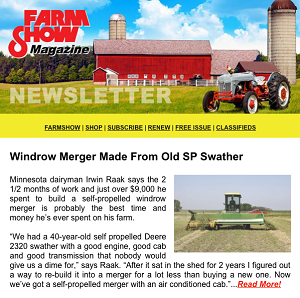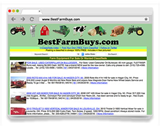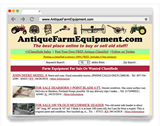You have reached your limit of 3 free stories. A story preview is shown instead.
To view more stories
(If your subscription is current,
click here to Login or Register.)
Fodder System Makes Better Beef
Purebred Red and Black Angus breeders Dwayne and Scott Fettes are making better beef cattle with fodder. They went from putting up hay to putting out fodder, which they’ve done now for six years. They’ve seen the difference in herd security and the cattle they sell, whether fed cattle or breeding stock.
“With o
..........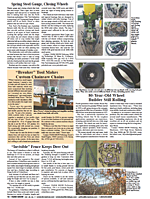
You must sign in, subscribe or renew to see the page.
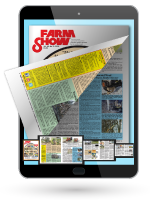
You must sign in, subscribe or renew to see the flip-book
Fodder System Makes Better Beef
Purebred Red and Black Angus breeders Dwayne and Scott Fettes are making better beef cattle with fodder. They went from putting up hay to putting out fodder, which they’ve done now for six years. They’ve seen the difference in herd security and the cattle they sell, whether fed cattle or breeding stock.
“With our fodder production system in place, we know we can get through a drought without selling off our cattle,” says Scott Fettes. “The higher digestibility of the fodder is so much higher than dry hay. It lets us use lower-cost slough hay or second-year hay.”
Fettes notes that fodder is a natural living organism going into the cow’s belly.
“Turn cattle onto green grass, and they instantly look healthier,” he says. “That’s how it is when you feed fodder year-round. The result is the healthiest cattle we’ve had in a long time.”
Making fodder didn’t just happen. Fettes and his son Eric researched the benefits of fodder and how dairymen were using it in their rations.
“We talked to people all over North America to learn what they were using and how it worked,” recalls Fettes.
The farming partners began by purchasing a plug-and-play continuous-rotation indoor fodder system. However, it didn’t work as promised.
“We were supposed to be able to hook up the water and power, and it would be good to go,” says Fettes. “It wasn’t. Even things like the drain being above the level of the floor.”
Scott and Eric began working on a redesign. The current system is a 780-sq. ft., climate-controlled grow room housed inside a 40 by 60-ft. shed. It features spray foam-insulated walls with a floor that slopes toward a slotted drain.
An in-floor heat system supports fodder growth. However, between the insulation and the heat given off by the growing fodder, it’s seldom needed.
“The boiler doesn’t kick in until the temperature drops well below zero,” notes Fettes.
The 7 1/2-ft. long grow trays are loaded with seed that has soaked during the day and drained overnight. With perfect conditions, they produced as much as 10 lbs. of barley root mass per day for every pound of seed.
“My wife Tina runs the system,” he says. “She produces the feed value equivalent of five big round bales of hay with an hour of work per day.”
Recently, they switched to a six-day rotation from seven.
“It gained time, made the trays easier to clean and reduced the risk of mold,” says Fettes. “It reduced the pounds produced per day, but the energy level is still there, so the benefits balance out lost pounds. We’re still averaging 8 lbs. of fodder per pound of seed.”
The system consists of seven racks of 28 trays. Each day, the garage door on the fodder room opens, and the day’s fodder is pulled out of trays. It drops into a tractor loader bucket before being dumped onto the ground for the cattle. Trays get a quick wash with a bleach solution before being refilled.
The amount of fodder an animal gets and which animals get it varies. Fettes notes that they try to make sure every animal gets a share. He describes it as a balance between producing as much as they can and where the greatest need is at the time.
“We try for about 6 lbs. of fodder per animal per day,” says Fettes. “Weaned calves go on a heavier fodder ration in September. In March, we increase the amount fed to cows after calving and before breeding. It flushes them out and gets them cycling.”
Fettes knows that some controversy remains as to the value of fodder; however, it began proving itself in its first year.
“We had a 200-bale carryover the first year and again the second,” he says. “We never had carryover before.”
Fettes offers a consulting service to folks wanting to build their own system. He’s currently working with producers in eastern Canada on fodder production systems.
One advantage of his consulting is that his customers share improvements they make.
“Every year we make improvements,” he says. “We’re still learning.”
Contact: FARM SHOW Followup, DKF Angus, Box 23, Gladmar, Sask. Canada S0C 1A0 (ph 306-969-2101; dkfredangus@gmail.com).
To read the rest of this story, download this issue below or click
here to register with your account number.



